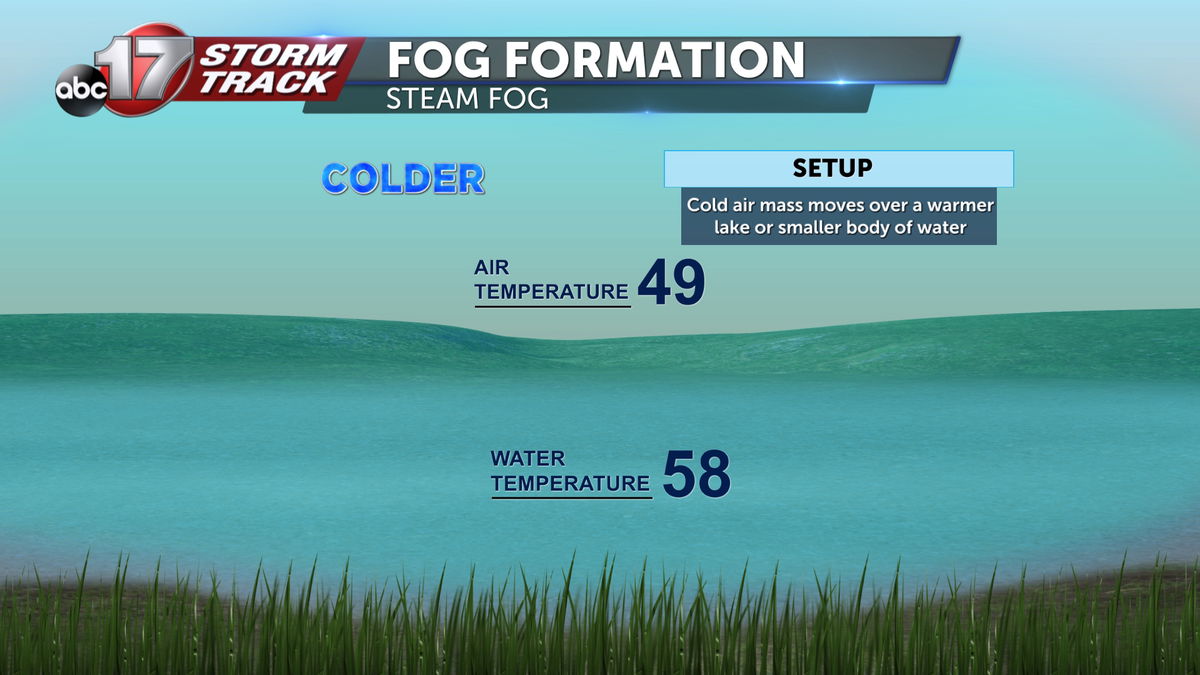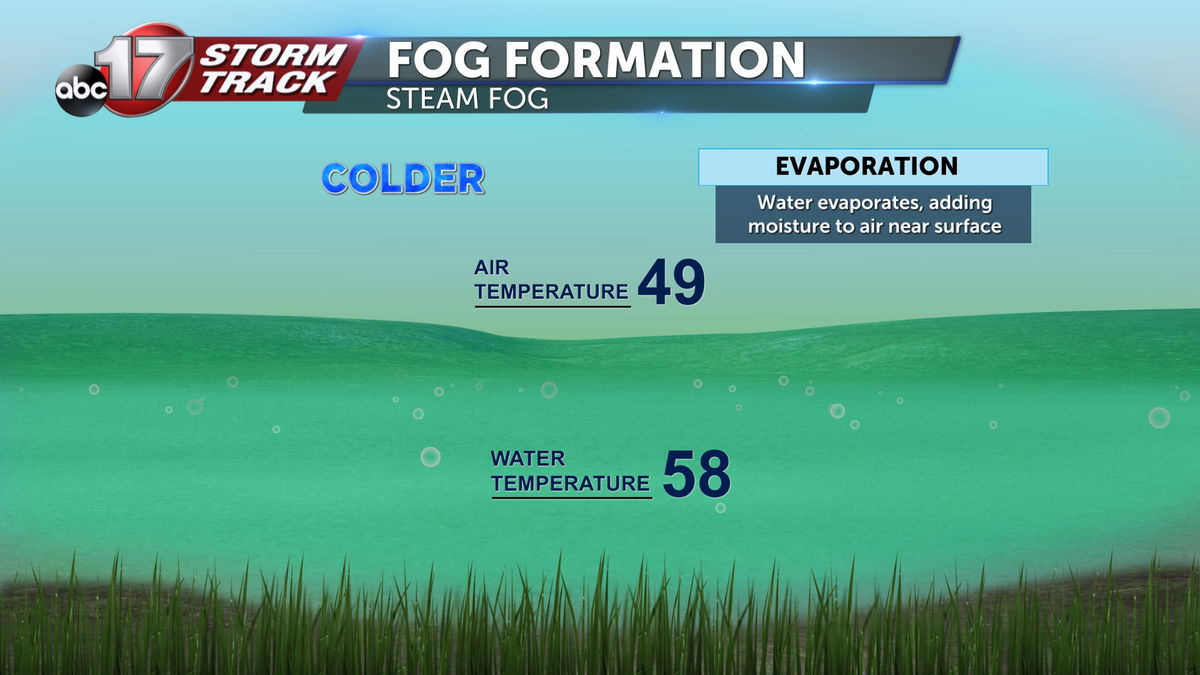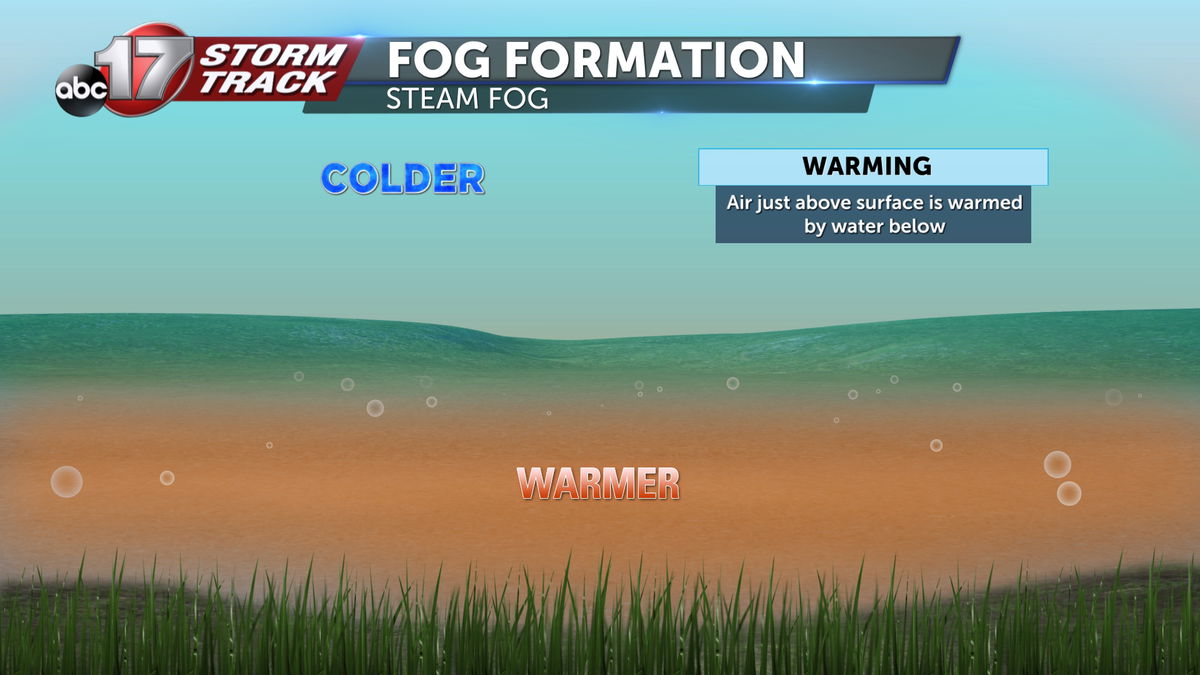The science behind freezing fog
Earlier Wednesday morning lakes and rivers across much of Mid-Missouri produced steam fog. This was seen on various weather cameras, but this was not the ordinary steam fog people see throughout much of the year. This was freezing fog.

Typically, steam fog forms whenever a cold air mass moves over a warmer body of water.

This leads to evaporation of the water which then creates a higher level of saturation in the air just above the water.

The air above the surface of the water also rises in temperature.

This in turn creates fog as this saturated air meets and condenses just above the water giving the fog its steam-like appearance.
Whenever the air temperature above the surface of the water reaches below 32 degrees, this now creates a whole new issue apart from reduced visibility. This fog can lead to dangerous and life-threatening situations for drivers who traverse through it. This fog is very affective at covering structures such as bridges or windshields. This leads to the possibility of black ice to form. Along with the formation of black ice, wind shields can become covered in a sheet of ice causing even more visibility issues.
